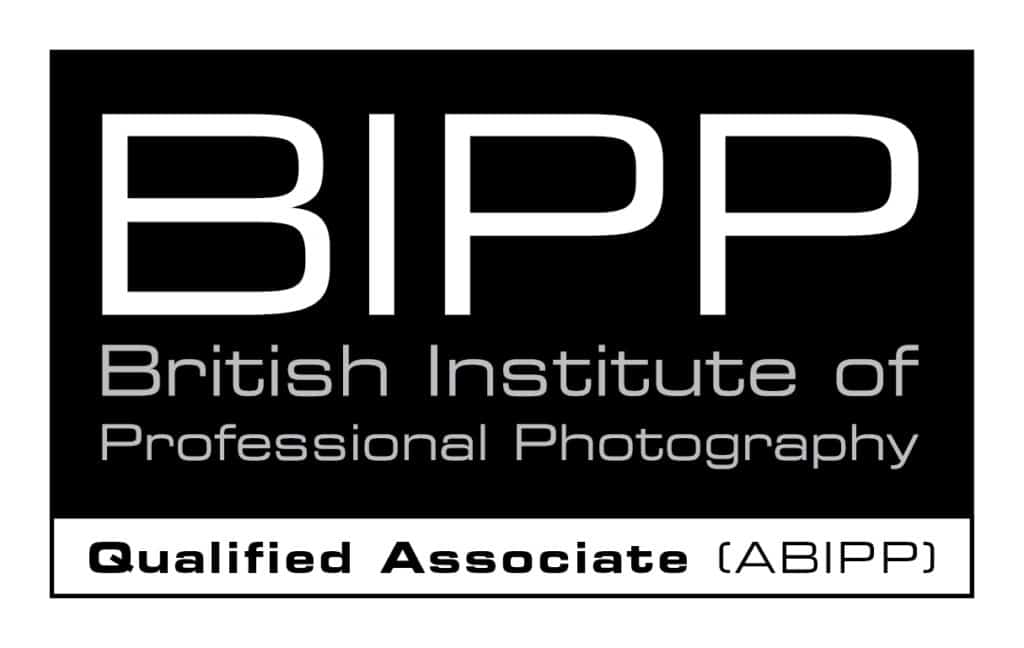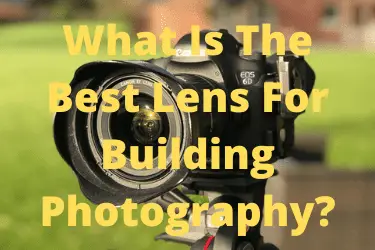The best lens for building photography will
- Be wide enough to capture buildings and interior spaces
- Have excellent sharpness to capture all the details
- Be able to produce technically correct images with minimal errors
- Robust enough for what you are going to put it through
- Of a size and weight to suit your specific needs
No, I am not going to tell you an actual lens, like a Canon XX-XX FX L lens (I know, other camera lens suppliers are available). I am not going to tell you an actual lens as if you shoot Nikon, that will be of no use to you now will it. I use Canon gear for my architectural, construction and real estate photography by the way, and I teach what I know and do.
I will tell you what I use, but this is all about me telling you the things that you need to know which will help you choose the right lens for you, whatever camera system you are using.
Which makes sense to me.
Who am I to tell you this stuff?
I am Rick McEvoy, an architectural, construction and real estate photographer based in the UK. I am professionally qualified in photography and construction – I photograph buildings.
And I am also the creator and all things at the splendid Photography Explained Podcast.
So I know about this stuff, and I also know how to explain this stuff in plain English.
Right, let’s get into this one.
1 Be wide enough to capture buildings and interior spaces
Buildings are big things, so you will need a wide angle lens for sure. How wide is a matter of opinion, but you need to be wide enough to get the exteriors, and also the interiors. But a word of caution here.
For interior shots, don’t go too wide as you will exaggerate the size of a space. Now if you are taking the photos for yourself, and are not claiming that they are accurate then fine.
But if you are working for clients, or trying to accurately photograph spaces then you need to be careful You need to think about this.
I will mention sensor size in a minute, so will explain this using a full frame camera as my reference point.
How we see the world
If you put a 50mm lens on a full frame camera you are getting pretty much the viewpoint that we humans enjoy. So to take any photo and replicate how we see things every photo should be taken using a 50mm focal length.
That is the theory, but reality is different.
Take photos of the interior of a building and you will only get a bit of it, certainly not the whole space. And that is no good to any of us is it?
To get the exterior of a large building in one photo using a standard lens you will have to be a long way off, which might not even be possible.
Standard lenses do not help us here. We need something else to help us. Enter wide angle lenses.
Why wide angle lenses are essential for building photography
With a wide angle lenses you get a wider field of view. A wide angle lens has
- a wider focal length than a standard lens
- a wider field of view than a standard lens
- and more depth of field than a standard lens
- a focal length with a smaller number than a standard lens (i.e. less than 50mm)
How wide should my lens go?
Well this is the beauty of zoom lenses, you get more than one focal length. You shouldn’t be looking to go wider than say 15mm, and certainly no longer than 40mm. That gives you a range to work with.
Any wider than 15mm and you are exaggerating things, any shorter than 40mm and you just won’t get stuff in. If you want to go wider that is up to you, I have given you my thoughts on that.
Sensor size
If you are using a cropped sensor or micro four thirds camera, you need to apply a crop factor to get to this focal length range.
- Cropped sensor camera – crop factor 1.5-1.6x – focal length range is therefore 9-10mm – 25-26mm.
- Micro four thirds camera – crop factor 2x– focal length range is therefore 7.5-20mm.
I know, it can get complicated.
2 Have excellent sharpness to capture all the details
The sharper a photo the better. There are lots of details that need to be captured when photographing buildings, and the sharper the lens the better.
In very crude terms, the more expensive the lens the better and sharper it will be. Or put it another way, the cheaper the lens the less sharp it will be.
Now you have to look at the relative costs within the same camera system, as in full frame, cropped sensor and micro four thirds.
But this is a decent rule of thumb.
Kit lenses are great to start with, but if you are serious about taking photos of buildings you will at some point need to upgrade to the next level. And I would upgrade my lens before my camera body.
Sharpness cannot be added, sharpness is what the camera captures, and the sharper the lens the sharper the photos you get. Sure there are other qualities that are important, but sharpness for me is number one.
And the range of sharpness across a photo is important. All lenses are sharpest in the middle, with a drop off in sharpness to the edges. The amount of drop off of sharpness is important, but let’s not forget that when we are photographing buildings this may be less of an issue than for other types of photography.
3 Be able to produce technically correct images with minimal errors
Now this is where it could get technical, but I will explain the ones that I need to and mention in passing the trickier ones ok! Don’t worry this will all make sense. And the ones that I mention here are the ones that matter the most to me, are the most significant, and are the ones that you need to know about.
The others are important but less significant to me, and push my levels of understanding to be honest!
Distortion
Very important. This is where straight lines are not straight, they are curved. The most common types of distortion are barrel distortion and pincushion distortion.
These can be fixed in Lightroom, Photoshop, and I am sure in other photo editing software.
Some lenses have more distortion that others, so if you can, get the one with the least distortion.
Vignetting
This is basically darkening around the edges. Is this a concern to me? To be honest, I apply a bit of vignetting to every photo, as I want the subject to be brighter than the surrounding bits of a photo, so this is not a great concern to me no.
Flare
When the sun is shining and your camera is facing the sun you might get lens flare, that is those flashes of sun that can kill a photo. They can also make a photo too.
And wide angle lenses are much more prone to this than standard or telephoto lenses due to the shape of the optics needed – you have more of a rounded front lens element sticking out that is prone to lens flare. And the wider the lens the bigger the front element, and the more prone the lens is to flare.
In very general terms, the better the lens the less lens flare you will experience. Coatings are applied that reduce lens flare. Shoot straight at the sun with any lens though and you will get some flare – not that I am recommending that you do this as you might damage your eyes!
Use a lens hood and you will reduce the chances of getting lens flare, and move somewhere else so the sun is not pointing at you and this will help. Get the sun out of a composition and you can stand between it and your camera.
Other things to consider – if you want to know more about any of these let me know.
- Blurring
- Contrast capture
- Chromatic aberration
- Spherical aberration
- Ghosting
Fix errors in Lightroom
Some of these things can be fixed in Lightroom. Lightroom has profiles for most camera lenses, and by telling Lightroom what lens you have used, it can apply technical corrections to fix stuff.
Why are there errors with lenses used for building photography?
These are optical errors. Optics are a complicated thing, and lens manufacturers have performed miracles by getting the lens errors down to what we get these days. If you were expecting error free perfection I am afraid that is not going to happen. That is not reality. There, I have said it. Now you know.
The best we can get is a reduction in errors, and corrections with software to get back to the starting point of what was being photographed.
4 Robust enough for what you are going to put it through
I take photos on construction sites. I need my lens, and indeed my camera, to be as dust and moisture resistant as possible. And also durable enough to take the odd, inevitable knock. And the day to day use that I put them through.
A flimsy lightweight lens is no use to me.
5 Of a size and weight to suit your specific needs
I do not want a big lens. I am not impressing anyone with a big lens. I need compact lightweight gear. I have to carry the gear that I am using with me over long distances sometimes, up ladders, in mobile plant, you name it, I have been there with my trusty camera and lens combo.
And some other things to think about
How do I find out about this stuff?
Well there is of course the internet, where you can find anything out. But for reputable, solid, technical and factual data head over to DXOMARK.
Too detailed for some but well worth a look.
Know your lens and sweet spot
Each lens has a sharp point, and has a sharpest aperture. And each lens has a drop off in quality from the middle to the edges. This is just fact, nothing that we can do about it.
So know your sweet spot, know the weak points, and make the best use of what you have.
Do I need to use a tilt-shift lens for building photography?
Ahh, right at the end I get to tilt shift lenses. These are designed for, amongst other things, architectural photography. You will read that you have to use a tilt shift lens to be a real building photographer.
But do you?
No, you do not.
I had one for a while, but did not get on with it. They are fantastic bits of kit, and if I was photographing high end architecture all the time I would use one, but it is not for me for the work that I do.
Why?
Well, firstly, tilt shift lenses are manual focus only. That was an eye opener to me, in more ways that one! Imagine going back to manual focus?
And whilst the adjustments to correct converging verticals in camera are a wonderful thing they take time, and is the one thing that I do not have enough of.
No, for real estate and construction photography a tilt shift lens is not the answer.
For any building photography where you have time to spend and quality is a primary issue then yes, they are great.
Cost/ value
Camera lenses are not cheap. But here is the good news. Buy the best lens that you can, and if you look after it properly, care for it, love it, it will serve you well for many years. We photographers replace camera bodies much more frequently than we do lenses.
And when you come to sell a lens you will find out that they hold their value really well.
A great lens is a great, long term investment.
Maximum aperture
Now the maximum aperture has a big impact on the size, weight and cost of a lens. I use a Canon 17-40mm FL lens. It has a maximum aperture of F4, which is fine for me. I do not need a bigger, more expensive, faster lens than this. I am after all taking photos of stationery things with my camera normally on a tripod.
What do I do?
Ah. I just told you. I use the Canon 17-40mm F4 L lens. It is a great lens, and 17mm is perfect for interiors, wide enough but not too wide. And I tend to take most of my photos of buildings using a 17mm focal length.
The lens is compact, lightweight, and has a sweet spot of F8.
All that I need. And not that expensive either.
What is not to love?
OK – I am done here.
Related reading
Well so much related good stuff – type something into the search thingy on my home page and see what you can find.
And yes, I have just worked out, there is another post with a similar title that I did not that long ago that I completely forgot about.
Related viewing
Check out the brand new video on my You Tube Channel right here – go on have a look right now!
Any questions get in touch via my website. It would be great to hear from you.
Cheers from me Rick



